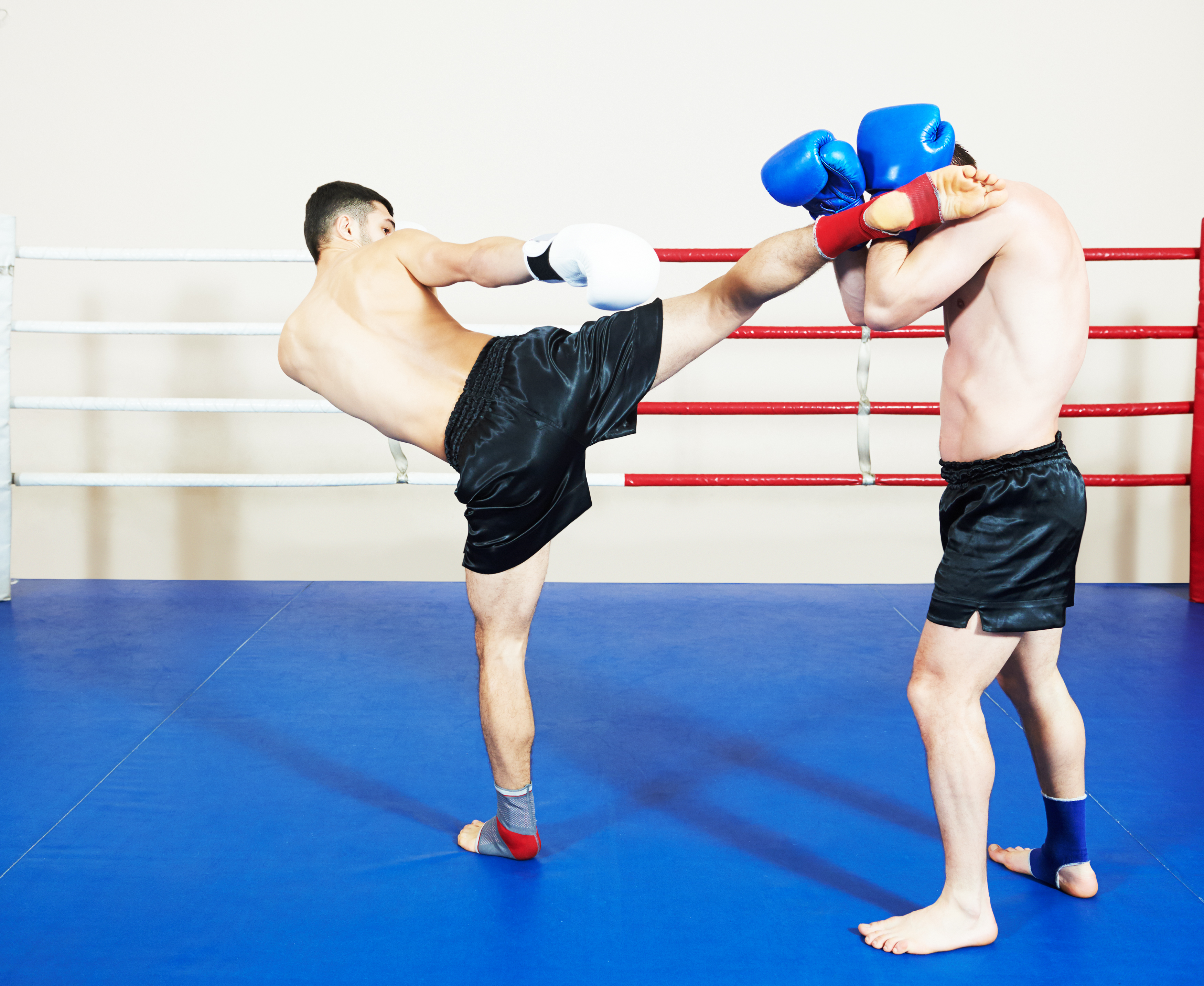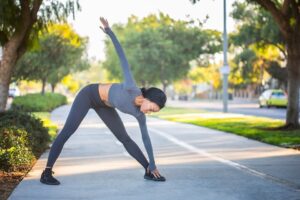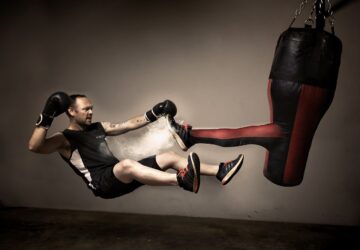Here is how to increase kicking power, whether for muay thai, MMA, Karate or any other striking martial art that utilizes kicks.
If you follow the tips given below and implement them consistently for at least one month, you will increase the power, speed and height of your kicks – guaranteed.
Just understand that it will not be easy, and depending on what your starting point is it could take much longer than one month to increasing your kicking power to the level you want.

You can significantly increase your kicking power for muay thai and martial arts by following these tips.
Now let’s begin with the tips that will help you to increase your kicking power if you implement them consistently for at least one month.
1. Dedicate Yourself to Perfecting Kicking Technique
Everyone says this is a crucual way to increase your power and this is the top tip for one reason – It it true!
If your technique is not good then you simply will not be able to generate the power from the ground up through your core and utilize your whole body in the most effective and efficient way in order to generate a powerful kick.
Don’t believe it is true?
Bruce Lee was 5 ft 7 and 130 pounds and the Little Dragon was able to generate incredible power in his kicks and punches by utilizing perfect technique to generate the maximum power in his kicks.
Yodsanklai Fairtex is known for his powerful kicks and he also is not a huge man standing at 5 ft 7 and weighing 155 pounds but no man of any size would willingly eat one his signature power roundhouse kicks.
Like most exceptional Thai fighters Yodsanklai has been training from a very young age to be able to develop his roundhouse kick which is both very technically sound and powerful.
So, always remember – excellent techniques achieved through good guidance and many many reps will go a long way to increase your kicking power.
2. Improve Your Flexibility & Mobility
Flexible and mobile hips will really help you increase kicking power.
A lot of sitting in a chair and even training without including stretching and mobility work will cause tightness in your hips, hamstrings, calves, shoulders and back.
Powerful kicks come from being able to allow energy to flow smoothly from the ground up through your body to deliver a powerful kick.
If there are blockages, tightness or stiffness it can affect your ability to draw up power and utilize it through your kicks.

The major issue is that many martial arts gyms and schools only focus on stretching and preach that more and more hours of holding stationary and often painful stretches are the only way to improve flexibility and mobility for kicking.
While stretching is definitely needed and is a major aspect for improving flexibility for kicking to increase your power there are other factors which are often neglected and these include:
- hip mobility
- calf flexibility
- ankle mobility
- shoulder mobility
- hamstring flexibility
- hip flexor tightness
- groin tightness
Hip mobility alone is a major factor not to mention all the other areas listed above.
But if you have 15 minutes a day to work on these issues you can go along definitely increase kicking power.
3. Unilateral Strength Training
Unilateral training is a fancy way of saying ‘training one side of your body at a time’.
Standing on one leg to throw a powerful kick is a great example of a unilateral exercise in action.
This is an excellent way to identify weaknesses one one side of your body and develop that side so that it ‘catches up’ in strength with your more dominant and stronger side.
Often times training both sides at once i.e barbell squats makes us unable to notice that one side of the body is weaker.

As kicking is largely a unilateral movement and we post on one leg and throw the other – unilateral training is hugely important to increase kicking power.
Some of the best strength exercises to help increase kicking power through unilateral training include:
- single leg squats
- Bulgarian split squats
- single leg dumbbell deadlift
- Cossack squats
- lunges/reverse lunges
4. Work on Your Balance
Unilateral exercises described above will definitely help with balance and develop your strength on one leg to increase kicking power.
But focusing on balance alone with your own bodyweight is another often neglected way to increase kicking power for muay thai and martial arts.
Below are some great balance exercise you can include to help increase kicking power.
And further below are 2 more kicking specific balance drills you can also include in your training.
There are many creative ways to work on your balance to help increase kicking power.
Here are a couple of suggestions, I am sure you can come up with a lot more using your own imagination and creativity:
1.Balance push kick drill
perform the push kick (teep in muay thai) and retract your leg but keep balancing on the posted leg and keep pushing the kick out – try to aim for 50 reps each leg.
Start off with 5-10 on each side broken down into multiple sets. Don’t worry if you have to place the kicking leg down again to get your balance back. Just keep track of your reps and sets and work to improve on it each session.
2.Kick & Block Drill
This a common drill used in muay thai but can be applied to any kicking martial art really.
This will challenge your balance and power and if you are not doing it and you train muay thai then you need to perform this drill.
It can be done with a partner, on the Thai pads or on the heavy bag.
5. Improve Your Core Strength
Core strength is vital for martial arts and any athletic endeavor really.
But for muay thai, the focus is often on sit ups and hundreds and hundreds of reps.
This will help your stomach be strong for body shots but there are also other areas of core strength that need to be developed to help increase kicking power and be a better martial artists overall.
These other areas include:
- Rotational core strength : developing power in the core and hips to utilize hip rotation to transfer power from the ground
- Static endurance core strength : exercise such as planks
- Anti-rotational training : help muscles strengthen and stabilize by placing asymmetrical and unbalanced forces
Below is one such anti-rotational core strength exercise you could incorporate.



